Earth Science and Engineering
Simulating Red Sea water exchanges
Powerful computer simulations are revealing new insights into water exchanges between the Red Sea and the Gulf of Aden.
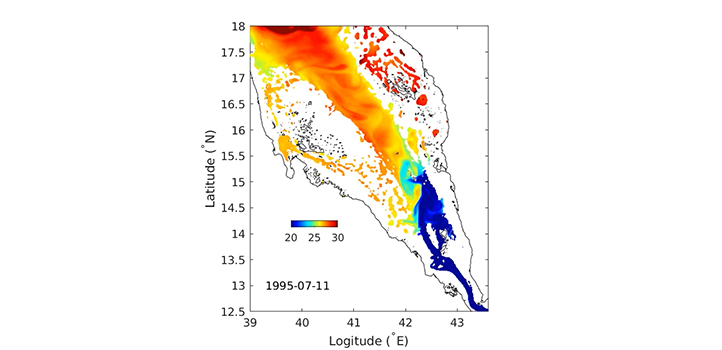
Computer simulations show that water exchange between the Red Sea in the north and the Gulf of Aden in the south varies from season to season and year to year. The findings help explain the circulation and productivity of the Red Sea Basin, instructing longterm management.
KAUST ocean modeling expert, Ibrahim Hoteit, and colleagues used an advanced computer simulation approach to obtain a detailed, high-resolution, multiyear view of water exchanges at the Bab al-Mandab Strait, a narrow waterway that links the Red Sea to the Indian Ocean.
This animation illustrates the water temperature in the southern Red Sea at the Strait of Bab-el-Mandeb as simulated by the KAUST model. Blue indicates the intrusion of the cooler Gulf of Aden intermediate waters in summer driven by the upwelling processes in the Gulf of Aden. In mid-June, the water starts to penetrate into the Strait and gradually flows into the Red Sea. These waters then move further North, with an inclination to the eastern shelf, where they begin to interact with the eddy processes. In late October, these waters retreat to the South, back to the Gulf of Aden, but some are left behind to mix with Red Sea waters. The animation shown is based on data collected in 1995 at a depth of 63 meters.
© 2019 KAUST
In the strait during winter, an upper layer of fresh water flows from the Gulf of Aden into the Red Sea, while a lower layer of highly saline water flows in the opposite direction. During summer, a shallow, warm surface layer and a deep, weakly flowing salty layer of outflow from the Red Sea sandwich a fresh, cold layer of inflowing water from the Gulf of Aden. How this winter/summer pattern varies seasonally and interannually has been poorly understood.
The simulations revealed that the switch between the winter and summer patterns occurs approximately one to two weeks after a monsoon-driven wind reversal over the Gulf of Aden. There was considerable variation from year to year in the timing of the switch happened, and also for the longevity of each seasonal pattern. The summer water exchange appeared to be increasing in length by 1.45 days per year, while the winter exchange is decreasing by about 1.22 days/year. Also, the total volume of water, salt mass and stored heat exchanged between the Red Sea and the Gulf of Aden varies significantly from year to year.
“These interannual variations and trends could have very important implications on the thermohaline—the temperature and salt—structure of the Red Sea and on the functioning of its ecosystem,” says the study’s first author, Jieshuo Xie.

Diagrams showing the time versus water depth of changes in salinity (measured in practical salinity units or psu) over time versus water depth from June 1995 to November 1996. The diagram on the left is the model simulation: the diagram on the right is the in situ observation.
Reproduced with permission from reference 1 © 2019 American Geophysical Union.

Diagrams showing the time versus water depth of changes in temperature (measured in degrees Celsius) from June 1995 to November 1996. The diagram on the left is the model simulation: the diagram on the right is the in situ observation.
Reproduced with permission from reference 1 © 2019 American Geophysical Union
The findings were made possible by a computer model developed at the Massachusetts Institute of Technology, USA. This model can perform high-resolution simulations based on a lower resolution second model containing 19 years of multisourced Red Sea air and water circulation data. The team validated the accuracy of the simulations by comparing them with data collected in the Bab al-Mandab Strait between June 1995 and November 1996 from water-based devices and boat observations.
“These are the first-ever realistic simulations at these scales in the Red Sea,” says Xie.
Water exchanges between the Red Sea and the Gulf of Aden through the Bab al-Mandab Strait significantly influence the oceanographic processes inside the Red Sea and are vital for maintaining its unique ecosystem. “Large interannual variabilities in this exchange can have a significant impact on the circulation and productivity of the Red Sea basin,” says Hoteit. “Understanding the processes controlling this exchange is of great importance for the longterm management of the Red Sea in our evolving climate.”
References
- Xie, J., Krokos, G., Sofianos, S. & Hoteit, I. Interannual variability of the exchange flow through the strait of Bab-al-Mandab. Journal of Geophysical Research 124, 1988-2009 (2019).| article
You might also like
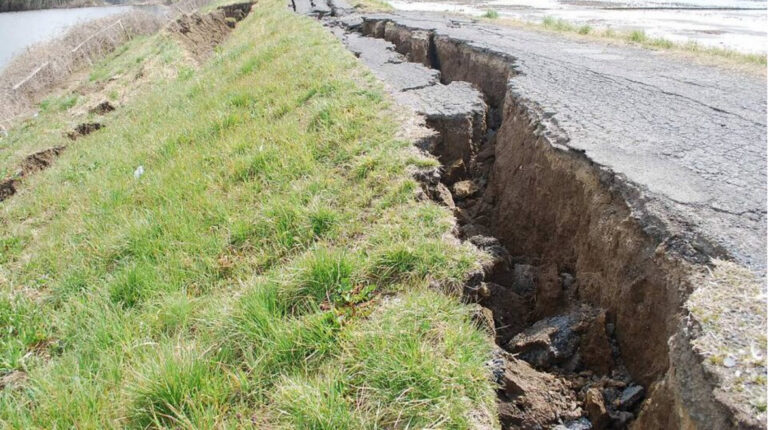
Earth Science and Engineering
When Earth breaks the “rules”
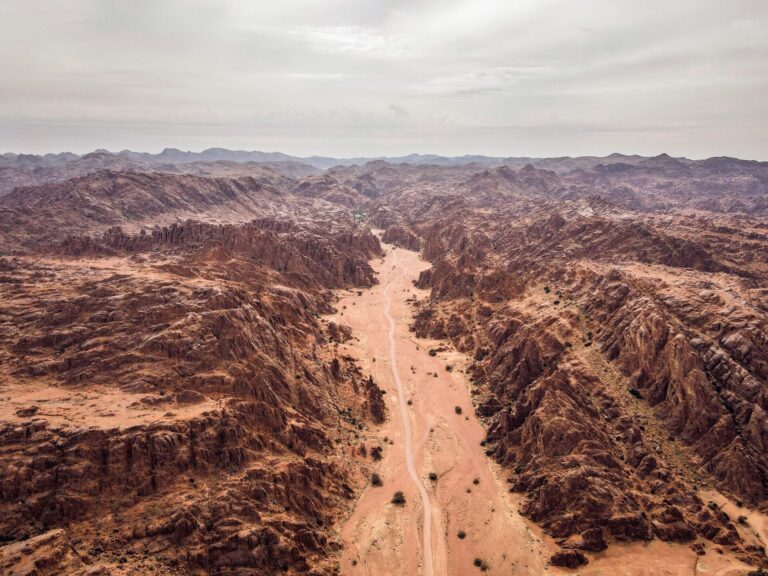
Earth Science and Engineering
Unearthing Arabia’s ancient foundations: New insights from the Ha’il terrane
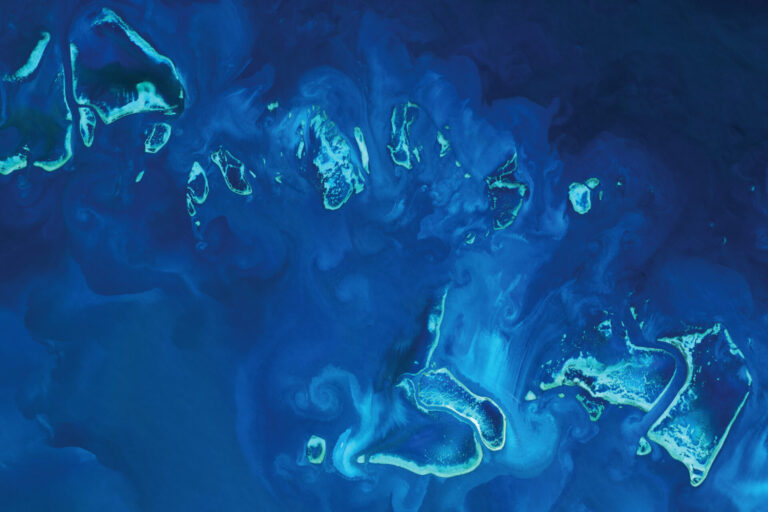
Earth Science and Engineering
Sensing color cues to monitor coral health in the Red Sea
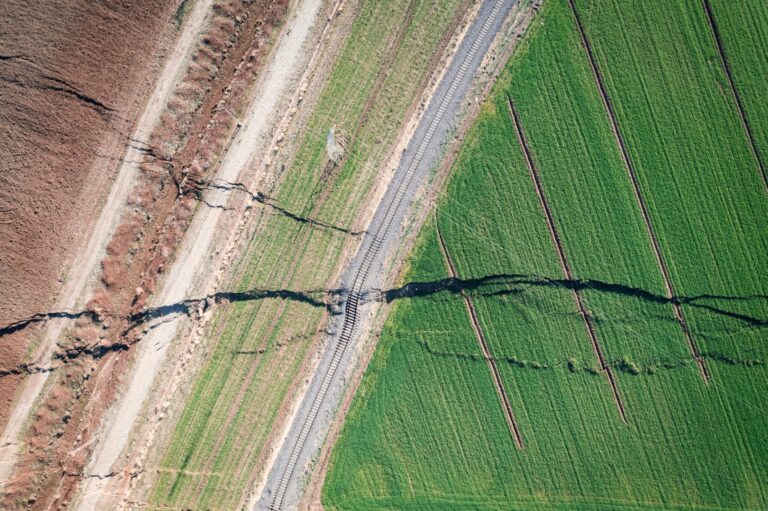
Earth Science and Engineering
Kahramanmaraş earthquake study showcases potential slip rate errors

Chemical Engineering
Unveiling the role of biomass-burning aerosols in atmospheric reactions

Earth Science and Engineering
Feeling the heat across the Middle East
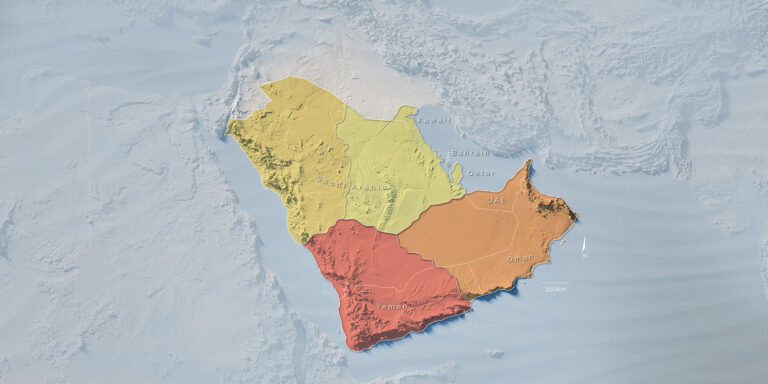
Applied Mathematics and Computational Sciences
Past and future drought patterns across the Arabian Peninsula

Earth Science and Engineering




